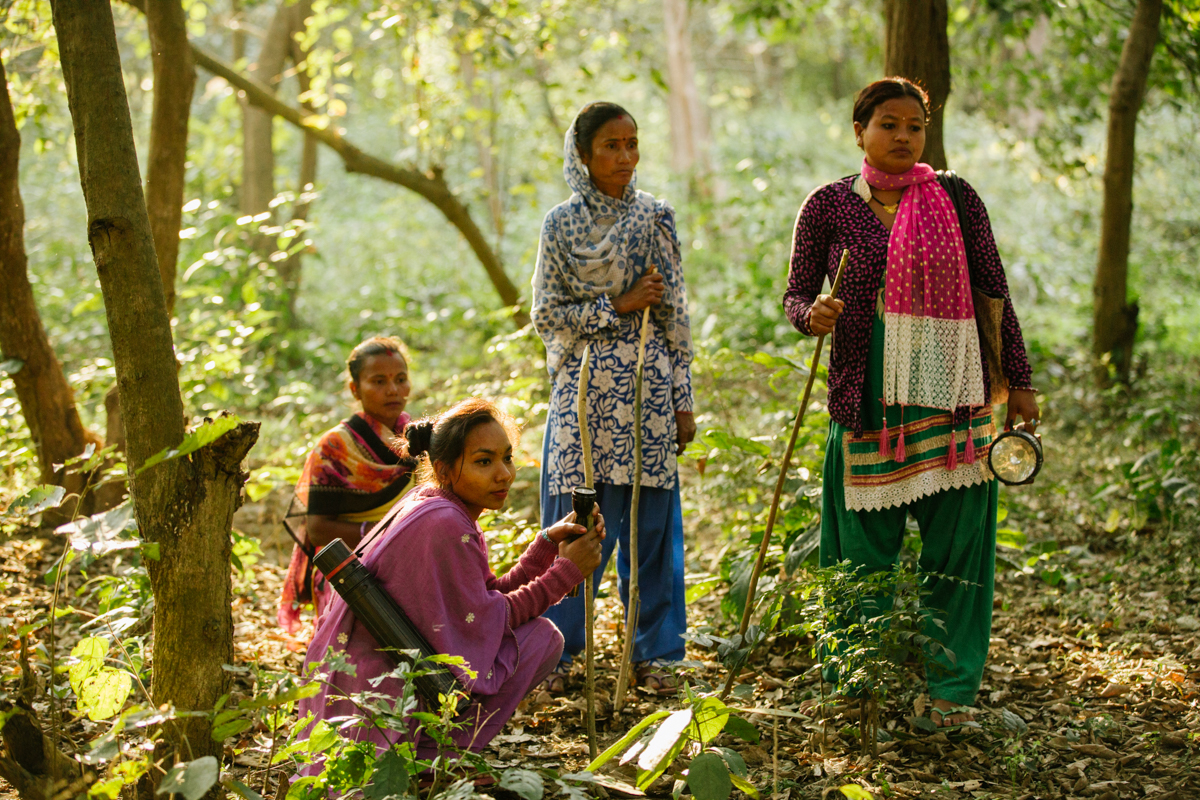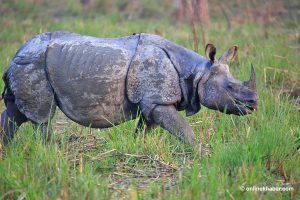
Nepal’s conservation scenario in the 1960s saw the onset of increasing habitat loss in the Terai – a result of in-migration from the hilly terrain to the Terai after the eradication of malaria. This combined with increased issues of poaching consequently led to a significant decline in the population of rhinos, tigers and other species, with less than 100 estimated rhinos in Chitwan at one point of time. In due consideration of these emerging threats, the protected area system was established starting with the Chitwan National Park in the 1970s to conserve the rhinos. It was soon followed by the establishment of such systems in Bardiya and Parsa for tigers, and Shuklaphanta for the largest herd of swamp deer, globally. These early periods were largely characterised by a species-centric protection and management approach.
Since then, there has been a paradigm shift in Nepal’s wildlife conservation approach. Over the last few decades, Nepal has evolved from species-focused conservation towards a more participatory model that relies on stewardship of local communities, and later to the wide-ranging landscape-level conservation approach that has emerged as a solution addressing biodiversity conservation as well as human development issues.
The 1990s: Participatory approach in conservation
Nepal’s protected areas have always been surrounded by settlements and communities, even prior to the declaration as protected areas. Most of these communities maintain close relationships with nature, which is a refuge, a provider for daily needs, and a source of livelihood for them. Hence, having consideration for the voice of the neighbour – wildlife or human – became a key issue during the decade.
As such, the 1990s mark a major milestone in conservation as this was the decade that saw conservation approaches incorporate human needs and aspirations for development as a foundational block for conservation success. This is evident in the establishment of community-based conservation areas by the Government of Nepal, legal provisioning and bringing people and communities at the forefront of planning, developing and managing protected areas, starting with the Annapurna Conservation Area in 1992 and Kanchenjunga Conservation Area in 1998. The approach was not limited to the new protected areas; it also altered policies of existing protected areas to bring on board local communities into mainstream conservation.
Meanwhile, the fourth amendment to the National Parks and Wildlife Conservation Act in 1996 also came up with the provision of buffer zones around the protected areas to facilitate the participatory conservation approach. Consequent legal provisions on sharing of the revenue for conservation and development of local people and communities in the impact zones (buffer zones), therefore, benefitted local communities by providing access to the revenue and an opportunity to plan and mobilise these financial resources for the development of their area. Management responsibilities for forest patches within the buffer zones were also assigned to local communities to meet their daily needs, and three-tier community institutions (user group, user committee and management committee) were formed at settlement level, unit level and protected area level, to effectively mobilise the 30-50% revenue received from the protected areas for management of forest patches within the buffer zone. With over 5,000 user groups, 168 user committees, and 14 buffer zone management committees in operation, this balanced approach that mobilises financial resources for community development has contributed significantly to the nation’s conservation successes while also strengthening the capacity of local communities.
In the last decade, Rs 1.8 billion of protected area revenue has been mobilised across all buffer zones of Nepal. Several independent assessments indicate that these efforts have largely helped generate positive attitudes towards wildlife conservation and contributed to the socio-economic development of local communities, and improved the status of forests within buffer zones.
The 2000s: Landscape approach in conservation
While the conservation successes of the early 70s to the 90s are based on species-centric conservation initiatives and introduction of the protected area network in Nepal, learnings from these early decades indicated that managing isolated areas would not be enough to sustain viable populations of large mammals in the long run. Consequently, the landscape-level approach was conceptualised to ensure the long-term survival of mega species by linking different protected areas through biological corridors.
The early 2000s marks the conceptualisation of Nepal’s first landscape-level approach based on the tiger dispersal model – the Terai Arc Landscape (TAL) – a transboundary landscape from the west of the Bagmati river and extending up to the Yamuna river of India; a joint partnership between the government and the WWF Nepal. Nepal’s Terai region has always been rich in biodiversity and high in soil fertility. However, it is also one of the country’s most densely populated and poverty-stricken areas. The Churia range in this landscape has a multitude of ecosystem benefits and is directly linked to livelihoods in the region. The Terai Arc Landscape is therefore considered a good example of safeguarding livelihoods through conservation. Furthermore, its transboundary nature has helped bring together local communities, government officials and conservation stakeholders from both regions for effective knowledge transfer, replication of successes and scaling up of activities.
This approach proved to be successful in not only improving community awareness on conservation but also in the development of community institutional structures to support conservation initiatives and establishment of close working relationships between communities and the government, benefitting nature while also supporting socio-economic development. The success of this approach consequently led to its replication in other parts of the country through the declaration of four additional conservation landscapes in Nepal – Kanchenjunga Landscape (KL), Sacred Himalayan Landscape (SHL), Kailash Sacred Landscape (KSL), and Chitwan-Annapurna Landscape (CHAL).
The 2010s: Leveraging technology in conservation
With rapidly developing information technology during the 2010s, it was only a matter of time before it was put to use to improve conservation measures – be it for efficient information collection, processing and analysis for management applications, or to take forward conservation science. A good example of technology in conservation is satellite telemetry wherein collaring an animal helps generate data on its movement across biological landscapes or even transborder areas. Technology has played a major contributing role in improving understanding of animal behaviour, helping access previously difficult-to-obtain information, and consequently improving conservation initiatives on the ground as well as at the policy level.
Such data has been crucial in ensuring sustainable development that is not at odds with environmental or ecological integrity of a region, be it the identification of areas where wildlife-friendly infrastructures (overpasses or underpasses) can be developed to allow free movement for wildlife while also keeping with linear infrastructure development priorities or in scaling up protection initiatives to reduce illegal wildlife crimes. Other examples include the use of a real-time smart patrol system by the Nepal Army within protected areas to monitor area coverage as well as report suspicious activity on a real-time basis, or the vehicle tracking system that helps monitor vehicles within national parks. These technologies supported by the WWF Nepal have not only eased on the ground management efforts but also boosted advocacy efforts through a provision of reliable information and policy- and decision-makers.
The 2020s: The future
Despite the decade-long insurgency, an earthquake, a blockade and several other challenges, Nepal’s conservation efforts have always been at the global conservation frontlines, be it as the first country to almost double its wild tiger numbers, in constantly maintaining its zero poaching standard for rhinos, or its efforts to create an original assemblage of species in historical landscapes. Nepal’s participatory approach which puts communities and their livelihoods at the centre of conservation initiatives, combined with the transboundary landscape-level approach is one of the critical reasons behind Nepal’s success. However, to maintain this positive trajectory in the years to come, conservation approaches must be adapted to include, inform and leverage on the newly developing federal state structures. Careful planning and inter-state coordination will be critical going forward, but with collective efforts – government leadership, community partnership and support form conservation stakeholders – will definitely help Nepal chart its journey through the next decade of conservation.
Bhatta is the Director of Programmes at the WWF Nepal.
























